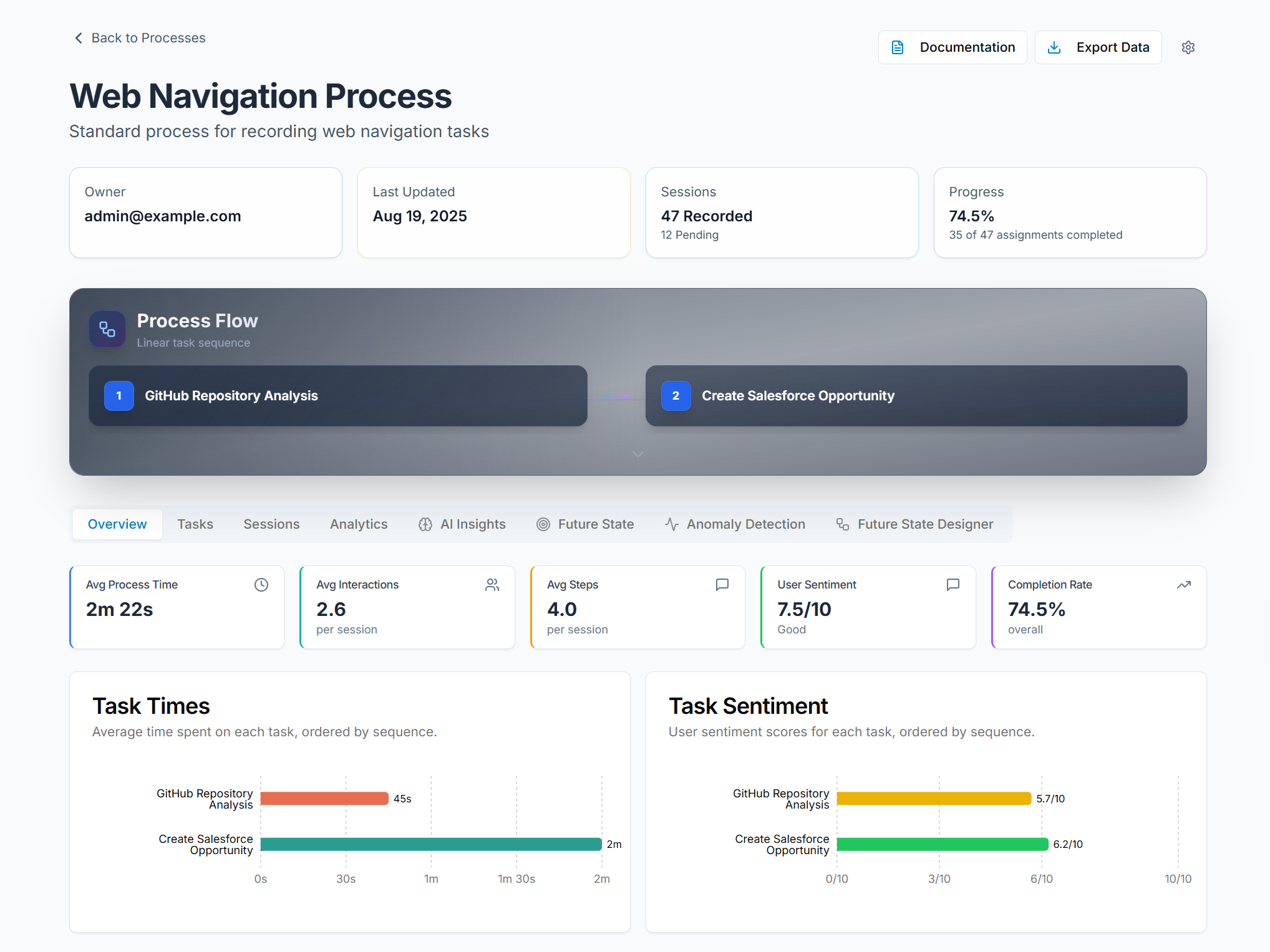
If your immediate goal is to see how work really happens across SaaS apps (Salesforce, ServiceNow, SAP GUI in the browser, etc.) and turn that into automatic process mapping, task mining, and actionable insights—ClearWork deploys fast at the UI layer with a lightweight browser capture, so you can start learning in days.
Celonis is a market-leading process intelligence/process mining platform optimized for system-of-record event data (ERP/CRM) and advanced data models (including object-centric). It’s powerful, but typically requires data connections and event-log modeling before value shows up.
Why this often takes time (inference): Process mining typically means you must extract data from systems, transform it into event logs, and model it before analysis—steps that usually involve IT/data teams. UiPath’s and Celonis’ own docs describe this architecture and event-log design pattern.
Why this is faster: UI-level capture avoids early dependency on system connectors + event-log modeling that process-mining projects require, which can extend timelines.
Choose ClearWork if you need:
Choose Celonis if you need:
Balanced view: many customers do both—fast UI-level discovery to steer priorities, then system-level mining where deep, governed analysis is warranted.
Day 0–2
Day 3–7
Day 8–14
Is ClearWork a process mining tool?
ClearWork provides process intelligence via UI-level task mining + automatic mapping, then augments with system data. Celonis is a process mining/process intelligence platform focused on system event data and object-centric analysis.
Why do process-mining projects start with data modeling?
Because mining relies on event logs (case ID, activity, timestamp) built from source systems; vendors document these steps explicitly.
Does ClearWork replace Celonis?
Not necessarily. Many teams use ClearWork to replace the manual process discovery process, find inefficiencies and drive downstream adoption. Some users will still use Celonis to get a deeper view into the process and object flows rather than the people-centric flows.
See your real workflows by Friday. Start a ClearWork pilot to generate automatic process maps and a quick-wins plan this week.
Not exactly. ClearWork captures real user activity at the UI layer to generate process maps and task insights in days. Celonis mines system event logs and object-centric data models, which is powerful but requires more setup and IT involvement.
ClearWork avoids dependency on ERP/CRM data models. By capturing actions directly in the browser, you see as-is workflows, bottlenecks, and friction points almost immediately — usually within the first week of a pilot.
Choose ClearWork when you need quick visibility across SaaS apps (Salesforce, ServiceNow, CPQ, billing, support), automatic process mapping, and AI/agent orchestration for adoption campaigns. Celonis is best for deep ERP use cases requiring object-centric analysis across orders, invoices, and deliveries.
Yes. Many enterprises run ClearWork for fast UI-level discovery and adoption, then use Celonis for deeper system-level analysis once priorities are set. They complement each other.

Traditional process mining can be valuable but it is often burdened with technical challenges and lacks the focus on the most important thing in your company - your people. ClearWork focuses on how your people operate and how you can transform their experience and therefor the outcomes of your company.
Enjoy our newsletter!